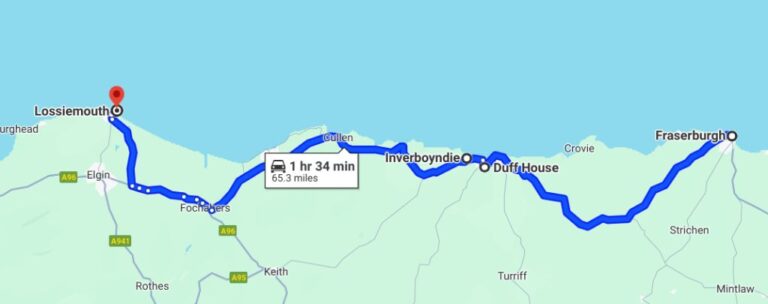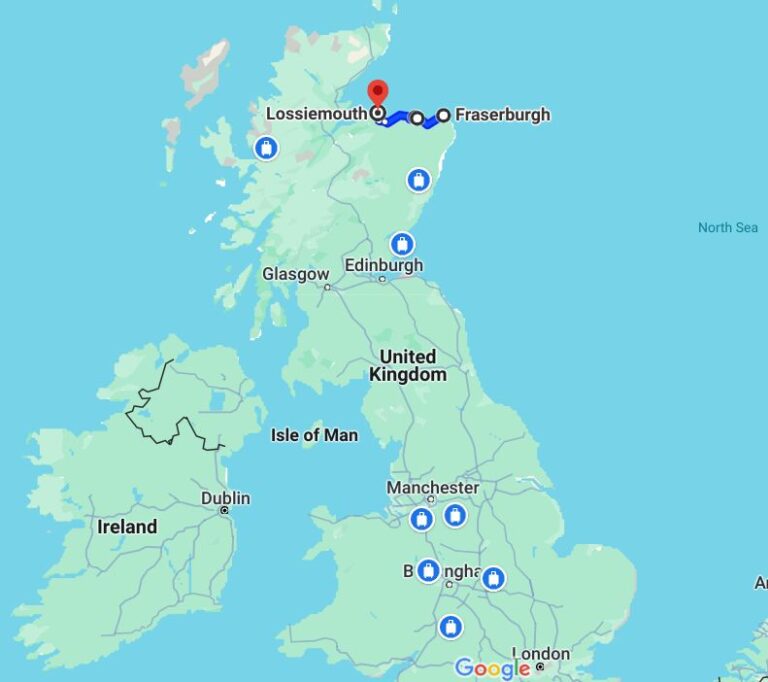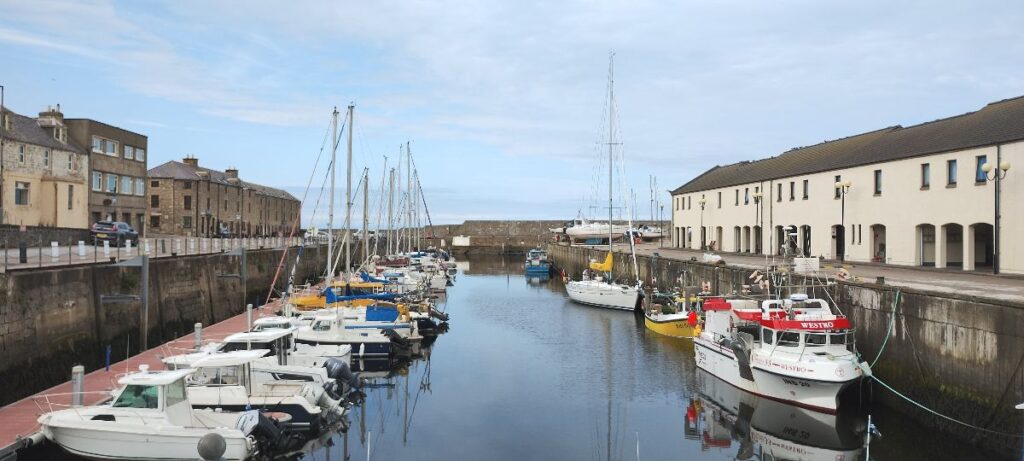We had first heard of Banff from one of our fellow diggers during the Bannockburn House archeological dig. It was their hometown, but the real reason that Banff is of interest is that we were informed that there was a really good “chippy” just across the Deveron river in MacDuff. When we were driving through MacDuff we couldn’t stir up the enthusiasm for another fish & chip dinner as we had just had one yesterday at Findlays in Fraserburg.
As we are passing through Banff we decide to stop in at Duff House. We enjoy seeing old ruins as it allows our imaginations to run wild, but every now and again we will stop in to see a restored property.
Duff House was completed in 1740 for the 1st Earl Fife.
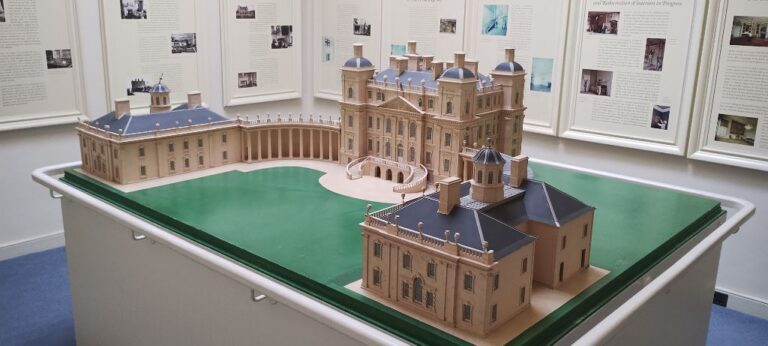
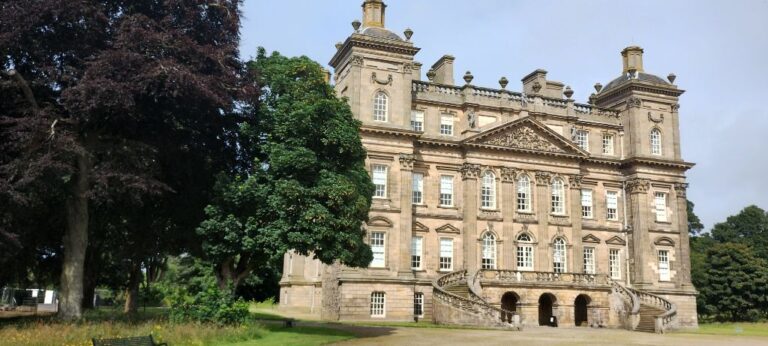
An ambitious architect created elaborate plans for the 1st Earl Fife, but apparently the Earl wanted something a little more modest, and only built the centre portion. The architect was also the builder, and was also the supplier of stone. There was a falling out between the Earl and the architect (“he overcharged”, “he didn’t pay his bills”, etc) which led to a lawsuit, which the architect initially won. However, what is the point in being an Earl if you can’t get your friends to fix a small matter like a lawsuit, and the matter was eventually resolved in the Earl’s favour.
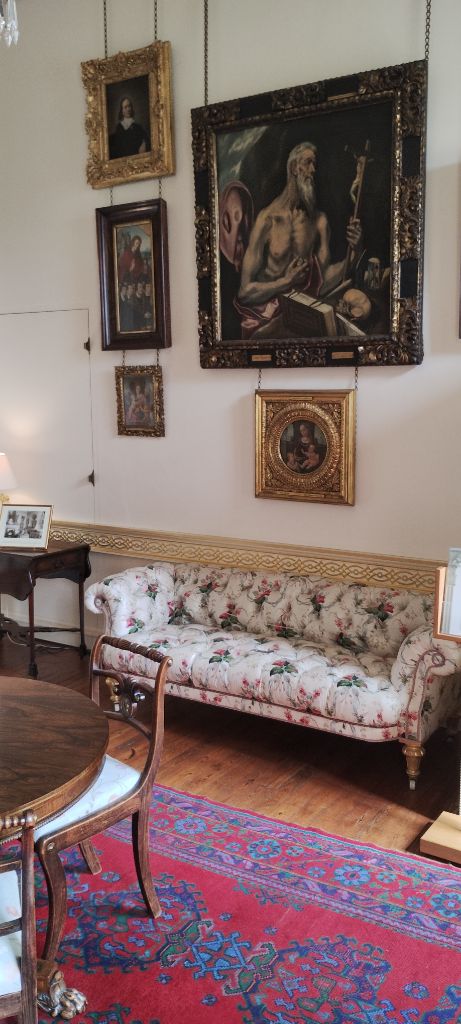
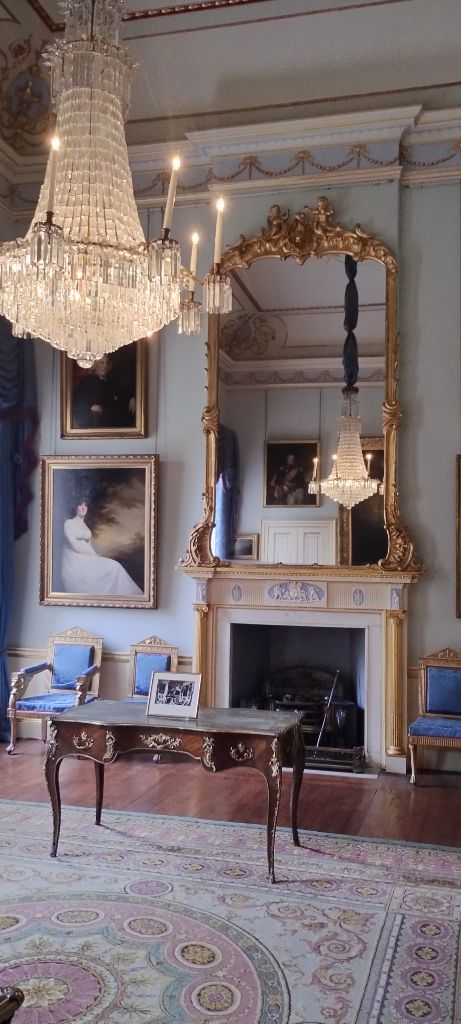
Duff House is maintained and operated by Historic Environment Scotland, and is now a gallery for artwork and furniture from the National Galleries of Scotland.
The dogs are whining for another beach day, so we stop for the night at Inverboyndie beach.
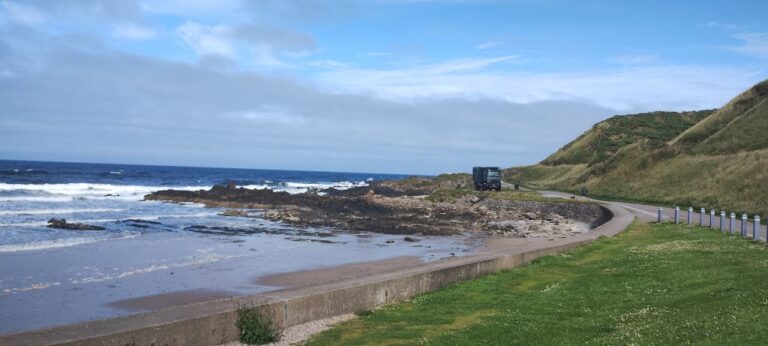
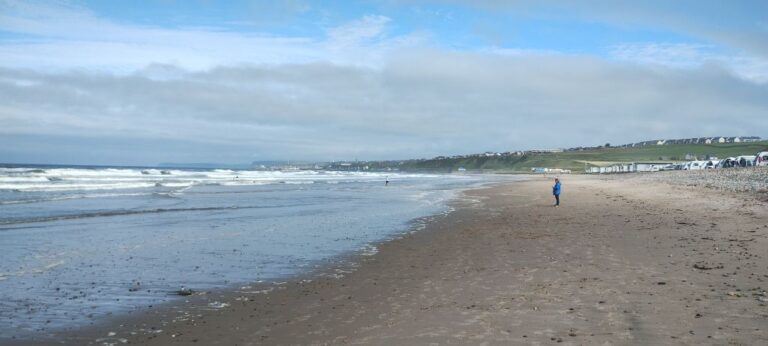
Inverboyndie beach is rocky at the end where we have parked, but opens up into a nice sandy beach. Apparently it is a popular destination as there is a holiday park running along the edge of the beach. UK holiday parks contain a few touring pitches (for short stay visitors), but more seasonal pitches (booked for a complete season) and holiday homes (e.g. trailer homes that can be rented on a seasonal or annual basis).
The dogs got their beach fix, so we can carry on.
Our destination is a coastal village called Lossiemouth where, we have been told, there is an active RAF base. We enjoyed watching the jets at RAF Lakenheath and look forward to seeing some more.
In order to get to Lossiemouth we have to pass through a mid-sized town called Elgin. There is a large parking lot in the centre of town for HGVs (Heavy Goods Vehicles). On a side note: we keep hearing the term “artic lorry”. Our first thought was that these were refrigerator trucks, but in fact are actually “articulated lorries”, what we would call semi-trailer trucks.
The HGV parking lot is great as it is easy for us to park, is close to a TESCO (a large grocery chain in the UK) and within walking distance of the Elgin Cathedral ruins.
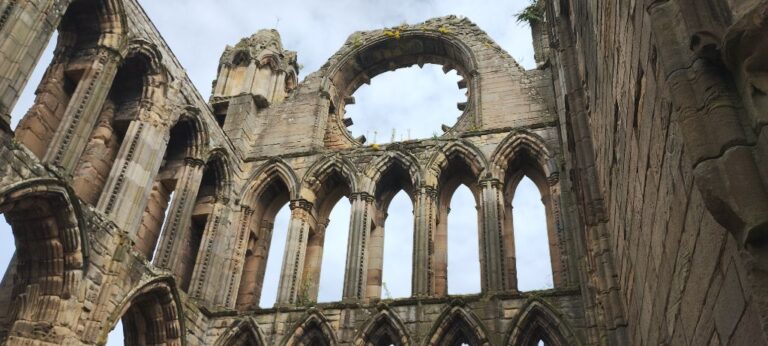
Elgin Cathedral was first established by the Catholic Church in 1224. It was damaged by fires in 1270, 1390 and 1402. The latter two fires were the result of attacks. Why attack a church?
The first attack was a result of friction between the Bishop of the Cathedral and the Earl of Buchan as to who controlled the lands around the Cathedral. Adding fuel to the fire, the Bishop ruled that the Earl leave his mistress and return to his lawfully wedded wife. Apparently the Earl was not keen to do so. Eventually matters came to a head and the Earl attacked and burnt Elgin Cathedral in 1390.
In 1402 Alexander MacDonald raided the burgh of Elgin and in the process burnt the Elgin Cathedral. Alexander was excommunicated by the Bishop of Spynie for this action.
After each fire the Cathedral was rebuilt and enlarged. A large rose window was added to the front entrance wall of the Cathedral rebuild after the 1390 fire.
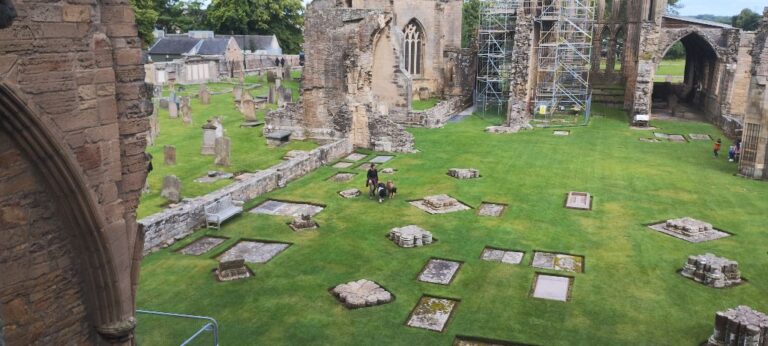
Elgin Cathedral was abandoned after the Scottish Reformation in 1560 and eventually fell into ruin. The property is currently managed by Historical Environment Scotland who have undertaken to stabilize the remaining sections. A small museum in one of the towers is dedicated to the stonework found in the ruins. It is the only such museum we have encountered so far and provided an interesting insight into the types of stonework incorporated into the Cathedral.
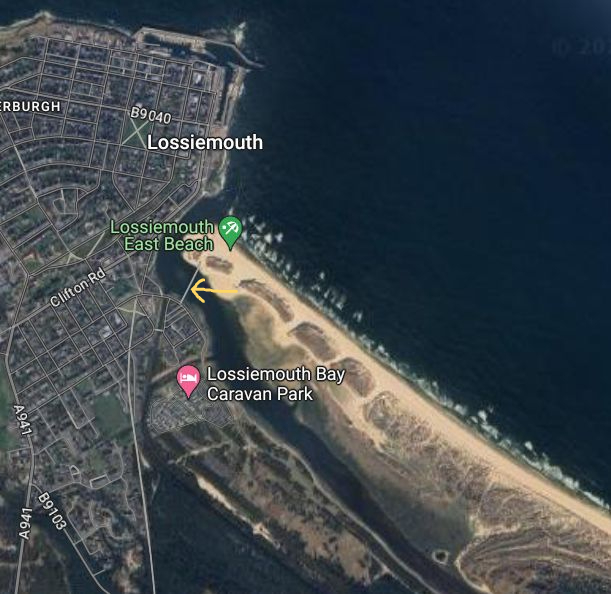
We are parking in a community parking lot (they often allow overnight parking) located next to the town of Lossiemouth and right across the bridge from the beach (or so we think). The photo above, from Google maps, shows a bridge connecting the mainland to a small peninsula that has a beach on both sides. When we walked to the beach this is what we found…
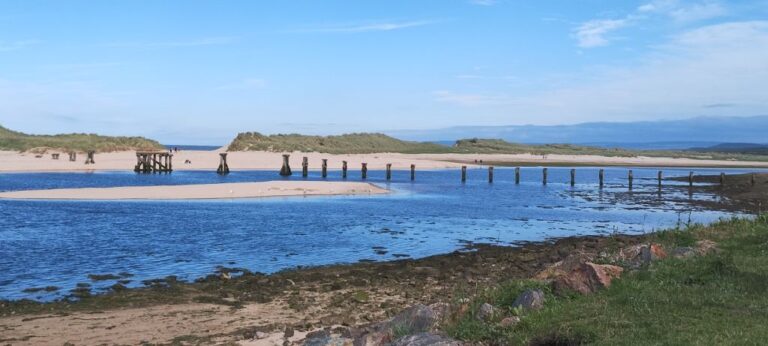
Not to worry though, the beach is a popular destination for locals and visitors alike, so a new bridge has been built just down the street. Google needs to update its satellite imagery as it doesn’t look like the old bridge has been in use for years.
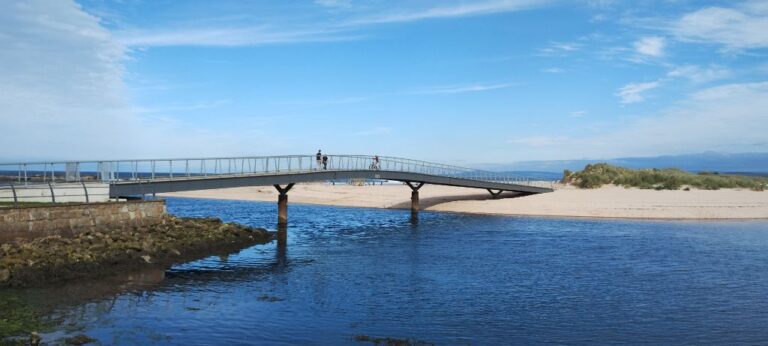
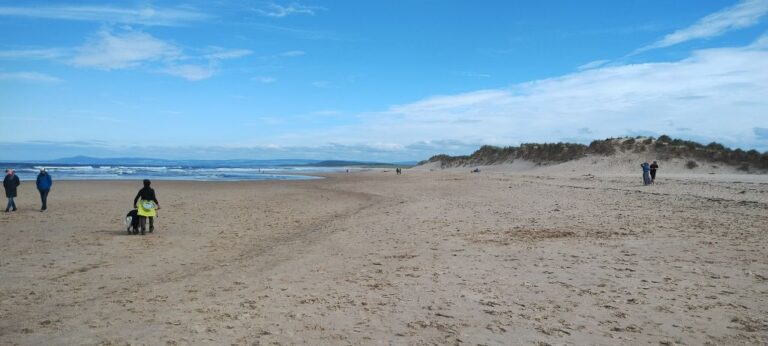
Lossiemouth is a nice small coastal village. The photo at the top of this post shows the local harbour.
We arrived at Lossiemouth on a Sunday and discovered that a large airshow had been held at RAF Lossiemouth on Saturday. End result, no flying today, so no jet watching for us. Oh well, let’s go see Spynie Palace instead.
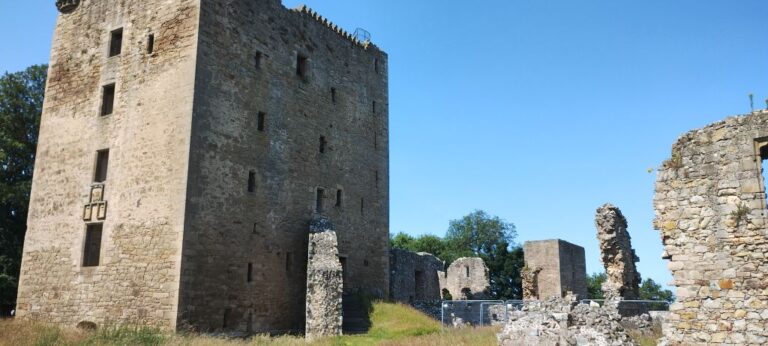
Spynie Palace was originally a Catholic Church, but when the Church was moved to Elgin in 1224 it became the residence of the Elgin Cathedral Bishops.
The original structure was made of wood, but a series of alterations, made between the 13th and 16th centuries turned the property into a fortified stone palace.
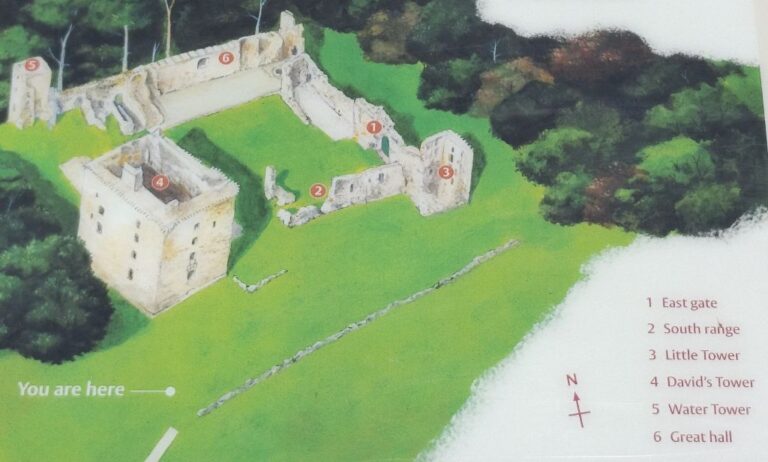
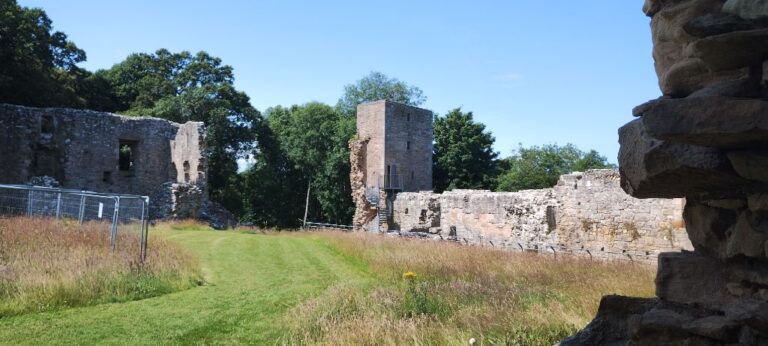
When the original church was built its location was at the edge of Spynie Loch, which as a seawater loch and harbour for small vessels. The loch no longer exists (silted over) and the Water Tower and Water Gate no longer look over any water.
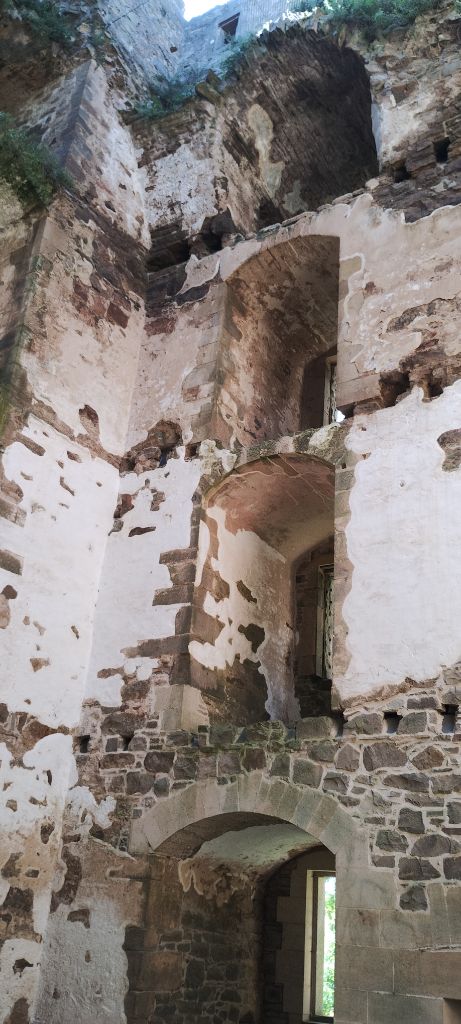
David’s Tower is still reasonably intact and the roof is still accessible. However, the tower as it exists today does not even hint at the opulence in which the Bishop’s lived.
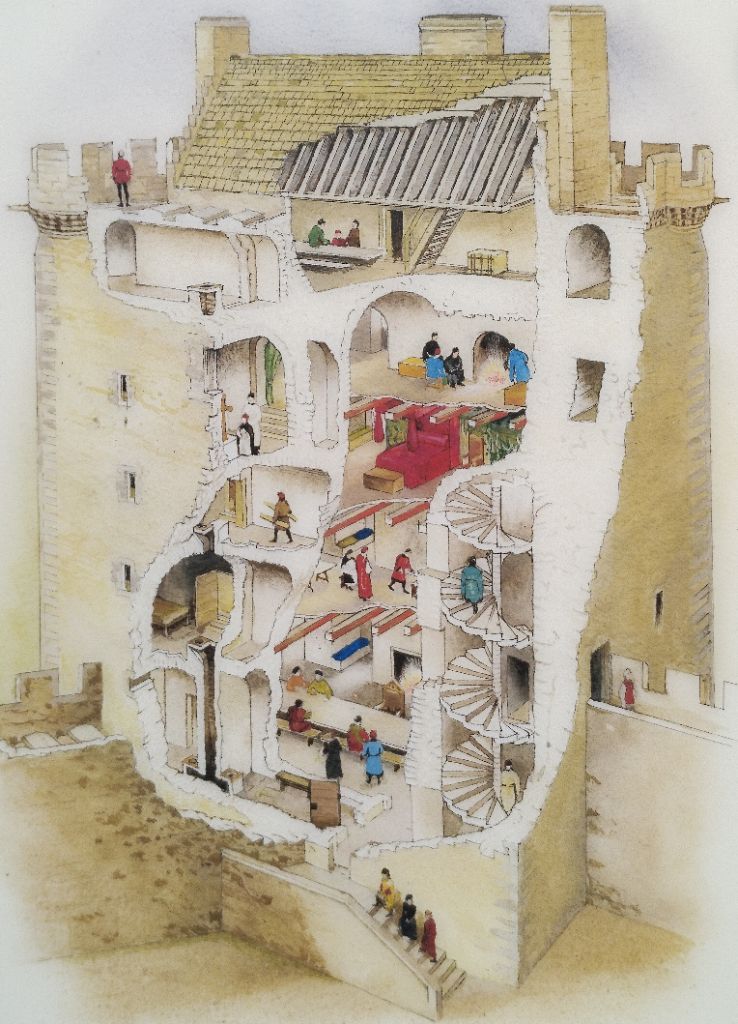
Construction of David’s Tower was started by Bishop David Steward (1462-76) and completed by Bishop William Tulloch (1477-82). The tower is the largest tower, by volume, of all medieval Scottish towers (a humble lifestyle it was not).
We were supposed to be moving on after a one night stay at Lossiemouth, but Rosie needed to have her tyres rotated (especially important on these large, soft tyres) and we found a local company who could do it for us the next day right in the lot where we were parked. Serendipity at its best!
The next day Invergordon Tyre Service showed up in their mobile service van, but the parking lot was full. “No bother, follow me”, so we did. We drove all of two blocks and parked across the street from the tyre technicians house!
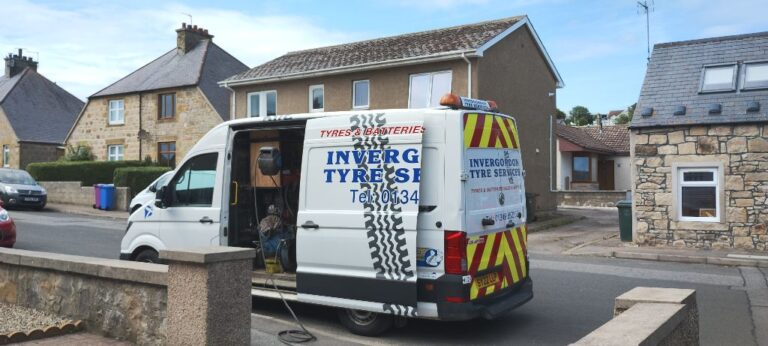
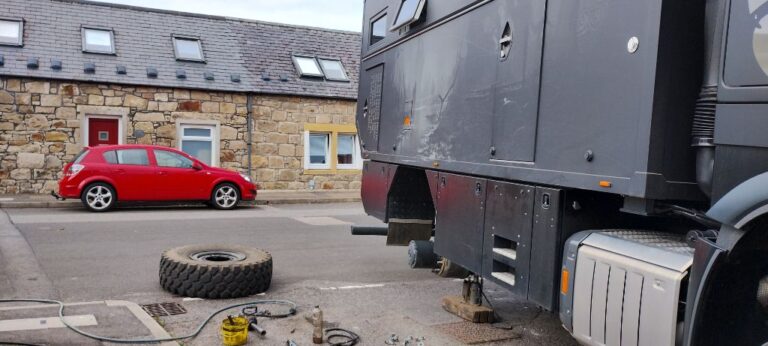
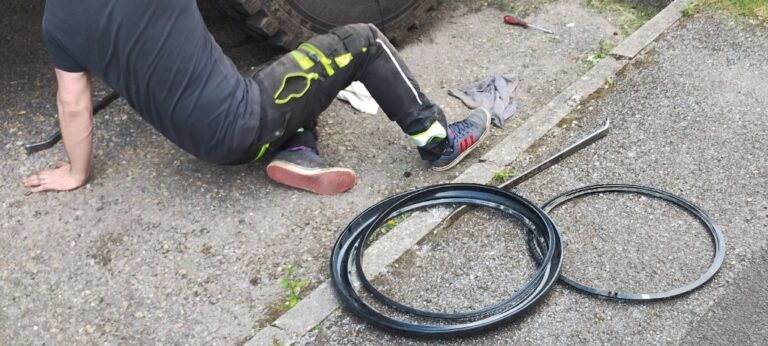
So we parked Rosie perpendicular to the street, with our bumper well into the street. When cars stopped we thought we were going to get an earful, but people just wanted to have a look, or stop to talk to the tyre technician (who lives across the street). In less than a couple of hours all four tyres had been rotated and we were good to go!
